
Ha Long Bay
A must-see in Vietnam Often listed as a must-see in Vietnam, Ha Long Bay (Vịnh Hạ Long) is stunning. Covering an area of 65, 650
Sat amongst arid surroundings in the state of Oaxaca in the south of Mexico is the state’s eponymous capital. Many head to the state in search of sand, sea and sun rays but this compact city is well worth visiting in its own right. The buildings that line the streets of the city centre are amongst the finest examples of Spanish colonial architecture in the country. Gorgeous colourful facades house everything from innovative artwork to historical artefacts to some of the most delicious food that money can buy. Shaded squares and glorious churches are dotted throughout this small city. Its relatively small size makes it the ideal place to wander around for adventurous spirits, with plenty to discover whilst travelling from A to B. The culinary scene in Oaxaca is often renowned as amongst the very best in Mexico and after visiting the food stalls here it is abundantly clear as to why. Oaxaca is a city that has everything that a traveller could possibly want but somehow simultaneously retains a small town charm that is so often lost by other growing cities.
Despite its relatively small size, Oaxaca is not only home to an appealing range of different things to do but also possesses an intriguing variety between the character of its different neighbourhoods. Some are tourist-friendly hubs of activity. Some are more authentic and colloquial in their quaint appearance. Whether you only wish to see the city’s main sights or possess a desire to delve a little deeper into the heart of the city’s character, Oaxaca can cater to your needs. Due to its compact layout, Oaxaca also allows you to experience all of this at once, with busy tourists hotspots and unspoiled peaceful escapes all within walking distance of each other.
Perhaps the most iconic building from Oaxaca’s vast selection, the Church of Santo Domingo is a stunning example of Baroque architecture and somewhat of a hub of social activity to the north of the city’s centre. The church’s grounds are home to a collection of quaint courtyards and rooms once the monastery. The city’s history is palpable around Santo Domingo, with cobbled streets and ornate facades lining every street. What were once colonial homes have since made way for upmarket cafes and charming galleries that satiate the wants and needs of the city’s tourists and middle classes. Several stalls are in front of the church, selling high-quality handmade trinkets and typical Mexican souvenirs.
Behind the Church of Santo Domingo are the botanical gardens, which aren’t like most gardens of its type but instead house a flora endemic to the surrounding desert climate, including towering cacti alongside tranquil masterpieces. The gorgeous squares at the rear of the church also house the Oaxacan Museum of Cultures. The museum covers the state’s entire history, drawing parallels between past and present to outline the cultural influences of the citizen’s predecessors. A short walk from this cluster of cultural delights is a collection of unpretentious street food stalls selling all of the region’s tastiest specialities, including mole, a dish associated solely with the state of Oaxaca.
If the city centre crowds become a little overwhelming, just to the north of the Church of Santo Domingo lies the perfect sanctuary in the form of El Llano Park. Formerly a zoo, the park consists of several stone courtyards and tall trees, creating a sense of serenity and a delightful cool that perfectly combats the midday heat of summer.
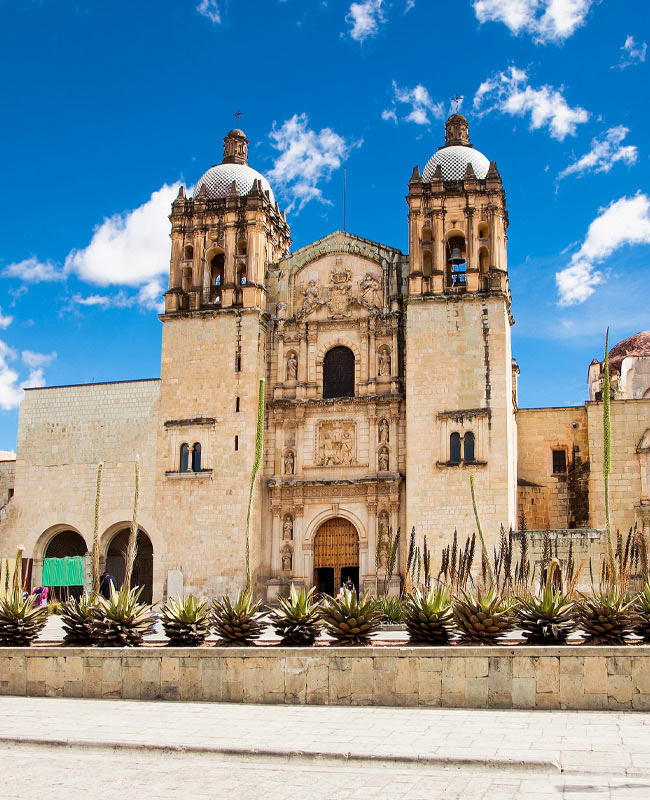
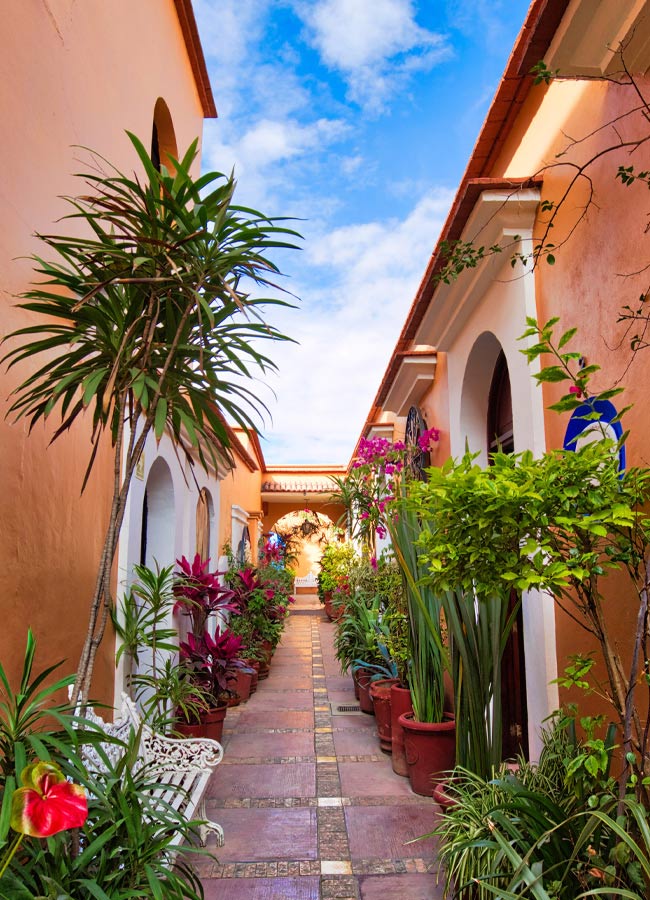
The zocalo, or town square, is a focal point for locals in Oaxaca. Crowds of Oaxacans flock to the area once siesta time is over and the day cools down, making for a family-friendly atmosphere and a real sense of community. The square itself has all the hallmarks of any great Latin plaza, with atmospheric archways lining the sides as furniture from various restaurants and bars spills out onto the square in a sociable buzz under the warming glow of the setting sun. The square is the best place in the city for a convivial drink in the evening. Occasionally, the bandstand, which acts as a centrepiece for the square, hosts traditional Mexican bands who serenade the crowds with their lively tunes.
Within three blocks of the zocalo to the east and north, respectively, are the Textile Museum and Contemporary Art Museum. The former is considered one of the most incredible sights in the city, displaying the mastery of Mexican textile construction in its historical and contemporary forms. The museum is set in a gorgeous refurbished mansion, which once functioned as part of the orchard of the local convent. Exploring the building is an experience, let alone admiring the textile treasures displayed within. Set within the canvas white walls of a restored colonial building is Oaxaca’s Contemporary Art Museum, displaying an eclectic array of work by local artists. The museum offers an insight into how the Mexican art scene is developing in the modern era. To the south of the zocalo are two indoor markets. Mercado Benito Juarez sells locally made trinkets and textiles to the north. Further south is Mercado 20 de Noviembre, which sells all Oaxacan street food.
Head to Mercado 20 de Noviembre to try the carne asada, or grilled meat, that is on offer here. After heading down a smoky corridor flanked with vendors selling a variety of different cuts of meat by the kilo. Pick your cut and take a seat on one of the benches, where you will have the softest flour tortillas and freshest selection of accompanying fillings brought to you as your meat is grilled to perfection. It is the Mexican food scene in its most brilliantly simplistic and utterly delicious form.
Perhaps Oaxaca’s best-kept secret, Jalatlaco, is a thoroughly picturesque little neighbourhood found a short walk to the northeast of Centro. The area appears paused in a more peaceful time, with barely any traffic running through its picturesque cobblestone streets and colonial housing painted in every vibrant colour imaginable. It is urban Mexico at its most genuinely beautiful and authentically charming.
At the heart of Jalatlaco is the Church of San Matias Jalatlaco, whose simple yet charismatic stone facade is almost symbolic of its quaint and peaceful neighbourhood. The laid-back charm of Jalatlaco has led to the neighbourhood’s inevitable development into Oaxaca’s most artsy region, attracting a crowd of alternative-thinking individuals who have, in turn, morphed many of the area’s shops and eateries into a more ethical breed of the establishment. Jalatlaco is the place for organic produce, vegan restaurants and environmentally friendly cafes. The increase in edgy residents has also resulted in several beautiful murals with a strong Mexican influence gracing the front of many of Jalatlaco’s buildings. This modern influence on the area is not to say that it lacks genuine Mexican flare, as many local women sell traditional street food outside their front doors.
While Jalatlaco spends almost the entire year in a drowsy peacefulness, it comes to life at the end of October when the Day of the Dead celebrations begin. Oaxaca is deemed one of the best cities in the country to experience this centuries-old festival for passed loved ones, and Jalatlaco is considered one of the best neighbourhoods to immerse oneself in the celebrations, which include colourful parades, skeletal costumes, and plenty of partying.
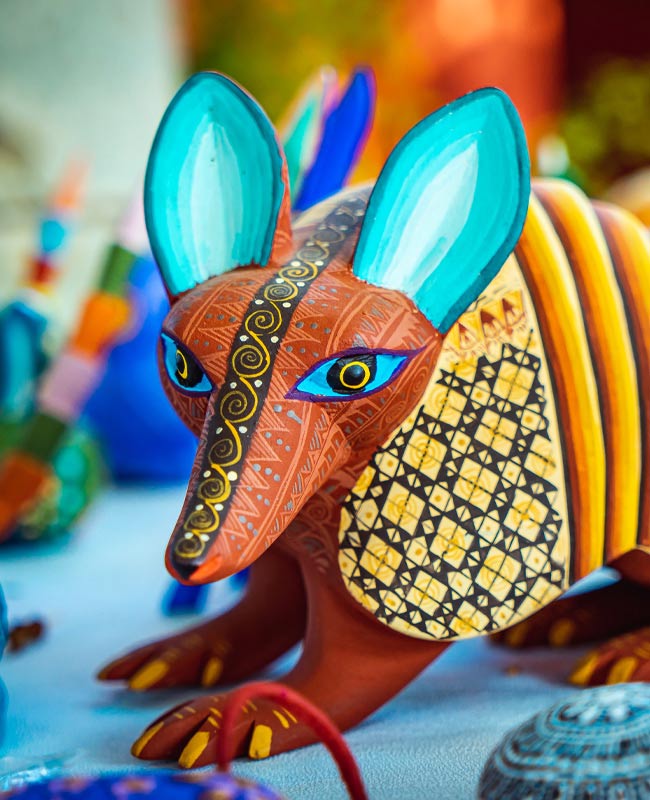
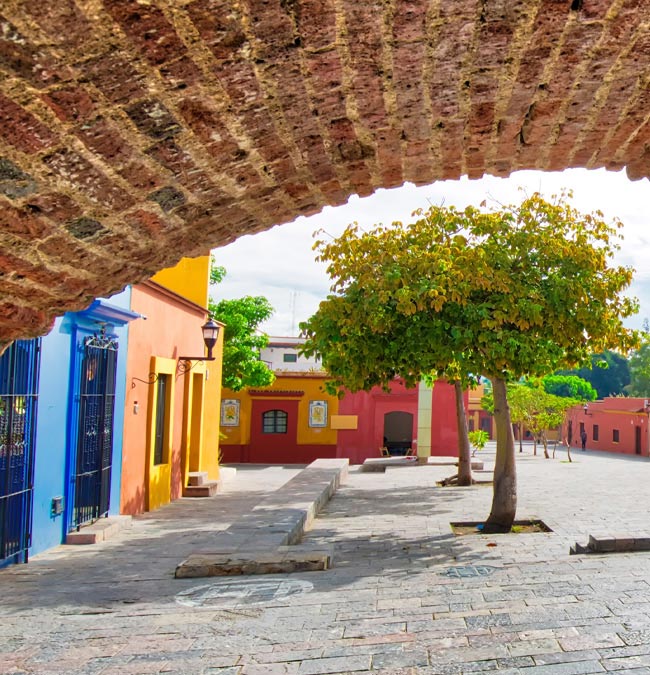
To the north of Oaxaca’s centre lies Reforma, which is much like a city in and of itself. Trading the historic structures of Oaxaca for the more modern builds that one would associate with the more prosperous neighbourhoods of Mexico City. The area is wealthier than most of Oaxaca, and this becomes immediately evident when wandering through the broader streets, which are lined with international eateries, artistic bakeries, and niche cafes.
Unlike the Santo Domingo and Zocalo areas, Reforma tends to be relatively tourist-free, as the neighbourhood is as off the beaten track as modern. This, in turn, can lead to a more genuine experience of Mexican life. To the north of Reforma is a fascinating landmark in the form of the Fountain of the Eight Regions. It has a traditionally dressed statue for each of the eight indigenous cultures whose influence has helped sculpt the city into where it is today.
A short walk west of southern Reforma is Xochimilco, the oldest neighbourhood in the city. The area’s village-like atmosphere is partly due to its status as the city’s textile industry hub. Several local artisans sell handmade wares from their quaint studios. The area’s stone aqueduct is also a draw, forming several picturesque archways, or Iquitos, to the south of Xochimilco.
Oaxacan food is a legend in Mexico and among culinary masters worldwide. The flavours of the state’s classic dishes are often unpredictable but expertly prepared in a fusion of flavours unlike any other. Oaxacan food options include national classics skillfully concocted with a passionate knowledge of traditional Mexican cookery. There is no shortage of places in Oaxaca to sample the delectable street food that has seen the city gain its renown as one of the country’s most significant gastronomic hotspots.
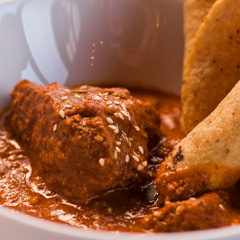
A Oaxacan classic that has been adopted by other cities across Mexico, but nowhere has quite mastered mole like the city of its origin. More of a genre of food than a specific recipe, mole refers to a savoury sauce that comes in a variety of different flavours, each with its own corresponding colour. Examples include mole negro made with chocolate, mole rojo with a spicier taste and the fragrant, curry-like mole amarillo. The sauces are typically poured over tender cuts of chicken, pork or beef and served with tortillas for mopping up.
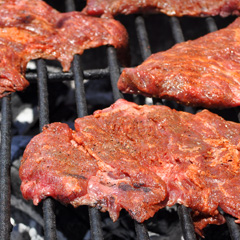
Simply translated as “grilled meat”, carne asada typically consists of thin cuts of fresh pork or beef that has been marinated overnight in flavoursome sauces with a hint of spice to them. These cuts of meat are then grilled over hot coals until cooked to perfection, before being served with tortillas and an assortment of sides including guacamole, salsa and nopal – an edible cactus. Pasillo de Carnes Asadas – “Grilled Meat Passage” – in Mercado 20 de Noviembre is famous for its expert meat grillers, who have been plying their trade for generations.
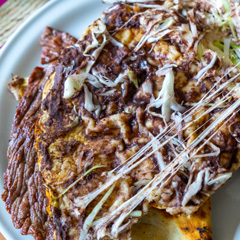
Another dish that emerged from Oaxaca, tlayudas are often compared to a Mexican take on pizza, but the comparison doesn’t do this classic street food justice. Tlayudas are prepared by starting with a large crispy tortilla that is topped with pork lard and spiced refried beans for a hearty base. This is then topped with all manner of Mexican deliciousness, including chicken, chorizo, dried beef, cabbage, avocado and queso Oaxaca – a traditional mozzarella-like cheese found in the state. Amongst the heartiest of Mexican meals, tlayudas are sure to fill up even the greediest of travellers.
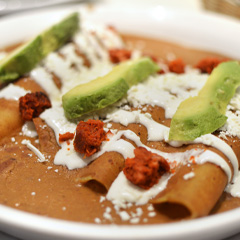
Enfrijoladas are an accurate reflection of Mexico’s love of beans. This hearty classic consists of tortillas being covered in a sauce consisting of refried beans and fresh chipotle peppers. These tortillas are then filled with cheese and occasionally chicken or chorizo before being folded over and coated in yet more bean-based sauce. The ultra saucy wraps are then baked and topped in avocado, sour cream and herbs. The secret to making the perfect enfrijolada is in the sauce, which is incredibly flavoursome despite its simplicity and offers just enough of a kick to keep your tongue tingling.
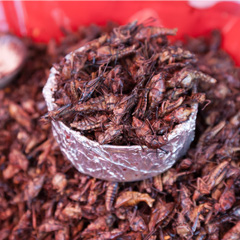
Wandering through Mercado de Benito Juarez, travellers will likely cross paths with this alternative Mexican favourite – deep fried grasshoppers. With a spicy kick and somewhat satisfying crunch, these crispy invertebrates have proven a popular taco filling for decades in Mexico, as well as a simple on-the-go snack. They may seem unappealing to many but grasshoppers are an environmentally friendly source of protein that has been forecast as one of the foods of the future. Once you look past their appearance they make a tasty snack.
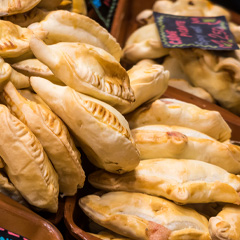
Oaxacan empanadas are an appealing Mexican take on the South American classic that combines a truly Oaxacan taste of the former with the hearty homeliness of the latter. Whilst classic empanadas typically lack in genuine spice, those found in Oaxaca are traditionally filled with spiced chicken and mole amarillo, giving the filling an aromatic flavour that packs a punch. The pastry shell and small size of empanadas make them an ideal on-the-go snack.
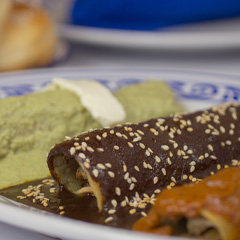
A Mexican staple with a Oaxacan twist. Classic Mexican enchiladas vary in preparation but usually consist of a tortilla dipped in chilli sauce and wrapped around meat, cheese or local vegetables. The Oaxacan version trades the chilli sauce for mole rojo. Made with chocolate, chipotle chillies and ground nuts, the mole sauce offers a different kind of spice and flavour that marries a national classic with a regional specialty for a unique dish that cannot be found elsewhere.
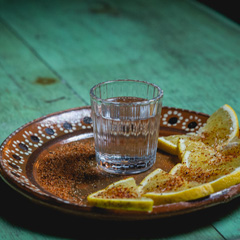
The delicious alternative to its more famous cousin, tequila, mezcal is a spirit primarily associated with Oaxaca due to the large quantities distilled there. Distilled by almost the exact same process as tequila, mezcal tastes much the same and its popularity is growing rapidly. Mezcalerias are becoming more common throughout Mexico, with a number open in Oaxaca until the early hours of the morning. Attending a mezcaleria is a great experience that can be taken to the next level if attending a mezcal tasting session.
Oaxaca is a relatively small city, with the majority of the main sites all within a few blocks of eachother. This means that the vast majority of the city’s visitors simply opt to walk between destinations, absorbing Oaxaca’s energetic spirit and picturesque streets as they go.
Those that wish to rest their legs or want to travel a little further afield can opt to travel by taxi or colectivo – a taxi shared with others travelling in the same direction. Minibuses to popular sites such as Monte Alban leave relatively frequently, but be sure to check times when planning your journey to such locations.
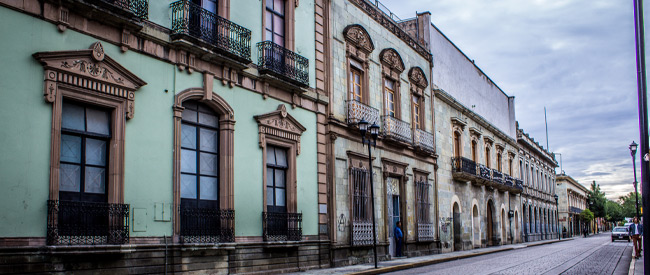
Situated in the dry basin of a foliage-capped valley, the rugged terrain surrounding Oaxaca City is an intriguing canvas of golden browns and verdant greens. Being one of the biggest producers of mezcal in the country, the land is often scattered with the spiked form of the agave plant. Amongst this archetypal Mexican landscape are a number of sites of great interest, from pre-Colombian hilltop cities to quintessential Latin townships to remarkable natural phenomena.
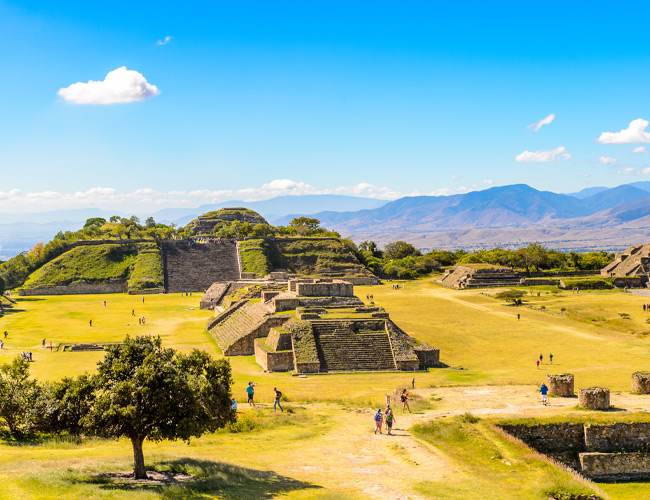
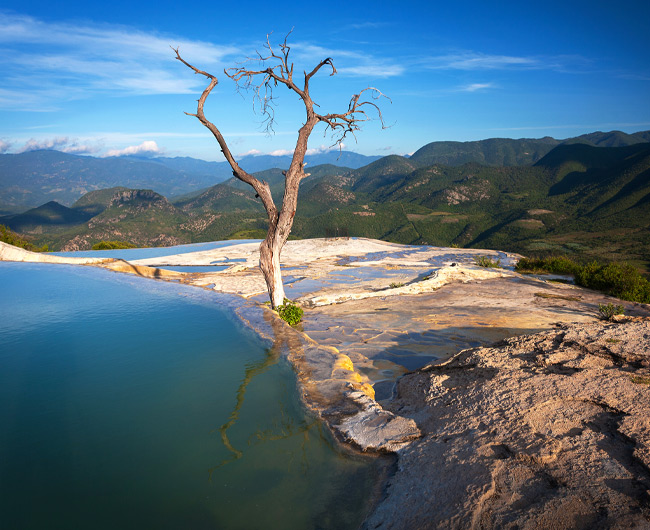
The second most important set of ruins in Oaxaca after Monte Alban, the structures of Mitla are found in the centre of a small municipality of the same name. Evidence suggests that Mitla was a religious site of colossal significance for the ancient Zapotecs, with priests carrying out numerous human sacrifices here during its prime, and an indication of the importance of death in Mesoamerican culture, as multiple carved tombs can be found throughout the site.The geometric wall carvings throughout the site are mesmeric but perhaps the most important feature of Mitla are the mosaics that cover some of the walls – a decorative feature that is unmatched everywhere else in Mexico. The mosaics depict the happenings in various myths and legends that were central to the Zapotec culture at the time.
Thanks to the dry conditions of Oaxaca state, the entire site has been remarkably well preserved. Another eye-catching feature of the ruins is the Church of San Pedro, rising from the crumbled base of the Zapotec site. Built by the Spanish during the 16th century directly on top of a pre-Columbian base in an oppressive manner akin to that of Coricancha in Cusco. Some of the greatest mosaics on site are found in the Grupo de las Columnas, a collection of larger buildings with giant columns for roof support. Mitla is a site of tangible historical significance, with a looming suggestion of the brutal culture of those that held it in such high esteem.
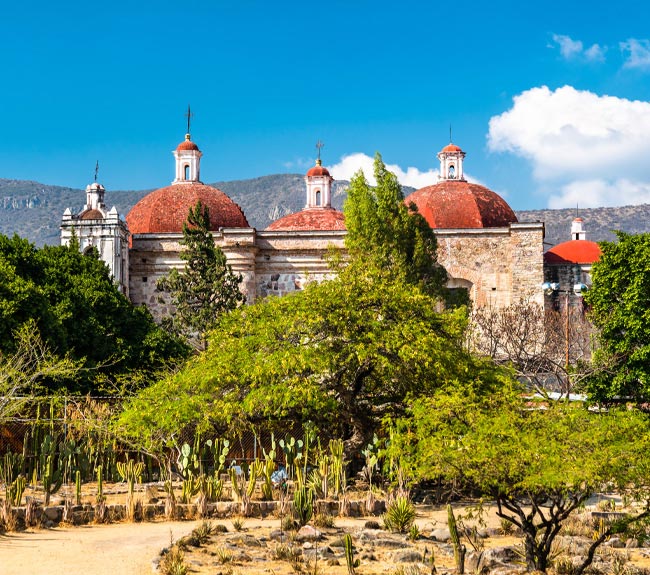
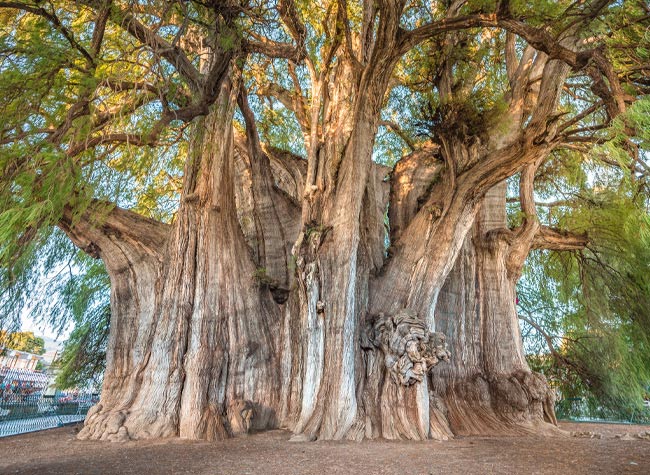
A popular stop on the way to Mitla is El Arbol de Tule (The Tule Tree), which sits within the grounds of a churchyard in the picturesque town of Santa Maria del Tule. The reason that the Tule Tree attracts so many visitors is due to its incredible squat shape, which has earned it the title of the widest tree on the planet – measuring 14.05m in diameter yet only 35.4m in height. At roughly 1,500 years old, the Tule Tree is almost as old as the nearby Zapotec ruins of Mitla. An incredible thought when considering the incredible array of cultures that have existed during the tree’s lifespan.
One of the primary draws of the Tule Tree is the marvelous way in which its gnarled bark seems to create images in front of your very eyes. Visitors claim to have seen the shapes of animals, human faces and mystical creatures within the twisted nooks and creases of the tree’s trunk. Originally believed to have been multiple trees that became entwined over time due to its exceptional size, DNA tests disproved this theory. It is difficult to believe that this natural wonder is still growing…
While it may seem logical for Mexico to be the focal point of the nation’s Day of the Dead celebrations, the south of Mexico is considered by most to be the best place to experience the annual festival. Festivities in Oaxaca see the streets flood with locals paying respects to their passed loved ones through a joyous celebration of their lives. Whilst it may seem an odd way to respect the dead, the three-day festival – which runs from October 31st to 2nd November – is held under the belief that ancestors return to the land of the living for three days each year, and this is a chance to show your respects and enjoy their presence.
Highlights of the festival include visiting cemeteries at night to breathe in the peaceful respect shown by the locals’ shrines, which glow with the soothing warmth of countless candles. During the day, locals dress up in all costumes, often resembling skeletal figures, and parade through the city unannounced. Once evening falls, these parades morph into peaceful candlelit processions. The city is covered in gorgeously presented shrines throughout the festival, adorned with beautiful flowers and gifts for the departed, including the iconic sugar skulls which have become so closely associated with Dia de los Muertos. It is an incredible experience that shows the city, and the Mexican people, in an entirely different light. and the Mexican people
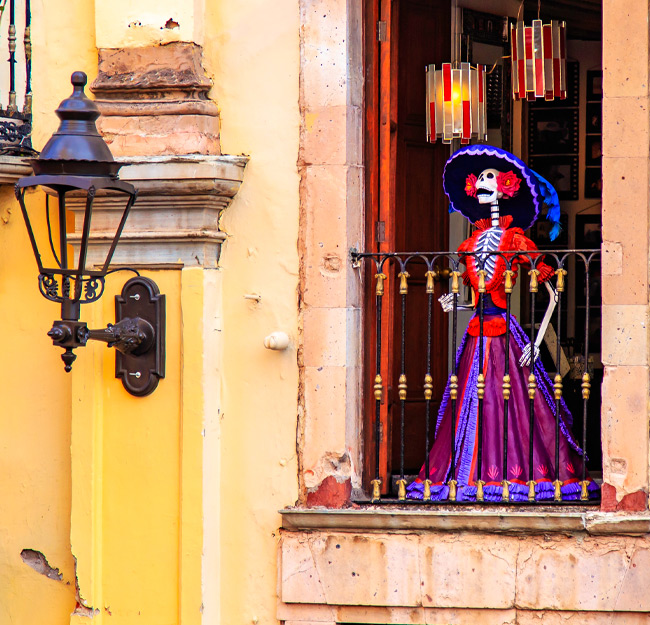

Mezcal is the less renowned cousin of Mexico’s most famous spirit – tequila. Made using an extremely similar process, this agave-based liquor has slipped under most people’s radars until recently. It is a new world that is gradually being revealed to the rest of the planet and Oaxaca is at the centre of that world. Similar in taste, mezcal has more smoky flavour and actually tends to be more popular amongst locals. Mezcalerias are found scattered throughout the city, full of locals knocking back shot after shot of the moreish beverage.
Going to a mezcaleria in general is a fun experience that cannot be missed, but to truly appreciate the nuances of mezcal we recommend attending one of the tasting sessions on offer. During these sessions you will not only be treated to an array of different mezcals but also learn about the history behind the lesser known spirit and the process by which it is produced. Understanding the subtle intricacies of the distilling process helps one appreciate the underlying flavours and meticulous process that make mezcal so popular throughout Mexico.

A must-see in Vietnam Often listed as a must-see in Vietnam, Ha Long Bay (Vịnh Hạ Long) is stunning. Covering an area of 65, 650
We are passionate adventure travelers who want to share the world and our travel experiences with everyone…
This website uses cookies so that we can provide you with the best user experience possible. Cookie information is stored in your browser and performs functions such as recognising you when you return to our website and helping our team to understand which sections of the website you find most interesting and useful.
Strictly Necessary Cookie should be enabled at all times so that we can save your preferences for cookie settings.
If you disable this cookie, we will not be able to save your preferences. This means that every time you visit this website you will need to enable or disable cookies again.